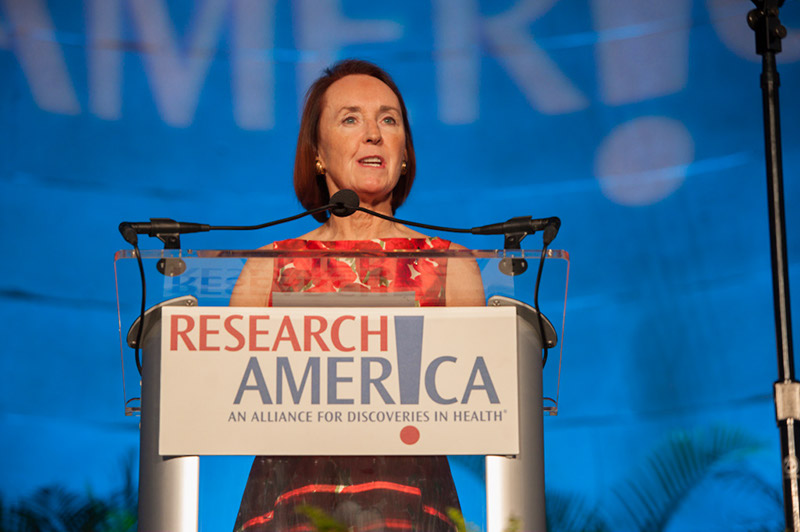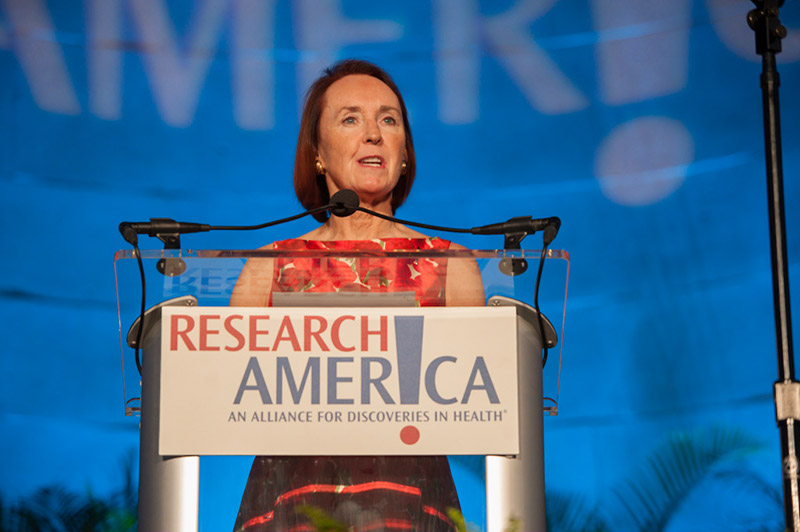Wake-Up Call

 Dear Research Advocate:
Dear Research Advocate:
Wake-up news this week: the U.S. has dropped out of the top ten on the list of “innovative countries” (see Bloomberg Innovation Index.) Also: for the first time, China is producing more scientific publications than the U.S. and recently released data from the National Science Board indicate that China is on track to overtake the U.S. in government investment in science research and development in two years or less.
Meanwhile, among budget priorities, U.S. investment in R&D is treated like an afterthought — with a broken budget system to boot. The fact that critically important government functions are in a “state of suspended animation,” as Ellie put it in a recent Hill article, is an excellent reason to speak out if you have not yet done so, and to speak out again, if you already have (our “How to be an Advocate” page can show you how.)
Here’s a recap of the state of play: the current continuing resolution (CR) flat funds the government until February 8. (Thanks to advocacy, the CR does suspend the medical device tax – a welcome development.) To prevent another shutdown, Congress must either pass another temporary CR or a final budget. In addition to the enormous immigration issues at stake, the debt ceiling showdown may be thrown into the mix as budget decisions are made. So what’s the most likely scenario? My admittedly murky crystal ball predicts that Congress will pass a fifth temporary CR that will raise the caps and increase the debt ceiling, paving the way, finally, for a final FY18 budget. This would be progress, if not yet a resolution.
The Senate has confirmed Alex Azar to become the next secretary of the Department of Health and Human Services. As I mentioned in a previous letter, the new Secretary will be under pressure to address drug prices. If that’s the goal, the best path entails maximizing the return on the health care dollars we spend and defeating the diseases that drive that spending. There is no room anywhere in the healthcare continuum for bad actors who price gouge or in other ways cheat patients and taxpayers, nor is there room for strategies that, in the name of healthcare cost reduction, undermine life- and cost-saving medical progress. All of us have a role in ensuring policymakers leverage medical progress rather than sidelining it.
President Trump has extended the declaration establishing the opioid epidemic as a public health emergency, through April 23. The declaration, however, is not nearly enough. Each day, 116 Americans die from their addiction. Journalist Sam Quinones’ exceptional written testimony to the Senate HELP Committee highlights some of the actions that must be taken to address this crisis, including greater investment in addiction and pain research and expanding the use of medically assisted treatments. As we argue in a January 24 letter to President Trump and congressional leadership, research gaps are a major obstacle to actionable solutions. Consult our opioid addiction fact sheet for more information on the scope of this crisis and the power of research to play a big role in facing it down.
Back to the wake-up call. Is there anything scientists can do to ensure policymakers answer that call? It starts with public engagement! Last week, I visited Sanford Research in Sioux Falls, SD, and the University of Hawaii John A. Burns School of Medicine (JABSOM). What these research institutions have in common includes partnership with Research!America, a track record of excellence in the conduct of innovative research and strong, effective public outreach programs that touch residents of their states in many ways, building relationships, a talent pipeline, and public support for medical and health research.
A researcher at JABSOM told me me he believes his outreach to the non-science public, including elected officials, is a sort of scientific civic responsibility, ‘like jury duty.’ If a K-12 teacher in Hawaii requests a visit for their class or a speaker, JABSOM meets every request. In South Dakota and adjoining states, Sanford delivers quality public outreach, with an extraordinary PROMISE program for K-12 and additional programs for the general public. Their innovative CoRDS program is a rapidly growing international patient registry for all rare diseases.
Sincerely,
Mary Woolley




